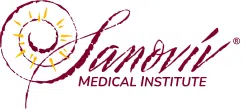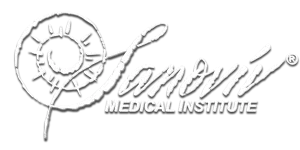Taking a Closer Look at Health from Within
By Dr. Elsie Dubois
What if you had a crystal ball that could let you know your future breast health? Then, what if once you had this information, you could have options on how to intervene in order to improve your future outcome? You may be surprised to learn that technology exists that can accomplish this, only it is not called a “crystal ball,” but rather Breast Thermography. This technology gives a glimpse of the changes in micro-circulation of the breasts, which in turn gives you an idea of the nervous system regulation and also of the metabolism of underlying tissues.
At Sanoviv, breast thermography is used (along with breast ultrasound) in order to assess the physiology of the breast and establish a baseline for which to compare subsequent scans. It is important to know that cancer cells double, on average, every 90 days. This means that anatomical changes in the breast are often not detected on a mammogram until about 5-7 years after the physiological changes in the breast have started. Therefore, true prevention means detecting and intervening before the occurrence of the anatomic changes that can be seen on a mammogram.
The first physiological change is inflammation, which is a way for your body to send you a warning sign. Inflammation can be detected along with changes in breast physiology through the thermographic breast scan. This type of diagnostic assessment is non-invasive and does not use ionizing radiation (as is done with mammograms). Instead, tumors in the breast produce nitric oxide, which can create the physiological changes detectable on these images. A consistently abnormal breast thermogram carries with it a 22x higher risk of future breast cancer. However, once these changes are detected, intervention can help prevent a future problem and may potentially change the outcome.
Sanoviv’s Top Ten Tips forPro-Active Breast Health
1. Manage Daily Stress
Chronic stress increases your body’s cortisol production, which then increases the conversion of the hormone estradiol to estrone and as a result, increases the risk for breast cancer. This reinforces the need to have effective tools for dealing with stress. Deep breathing is one of the simplest and fastest ways to relax. Other tools include relaxation through meditation, visualization or prayer,going for a walk in the park, and engaging in a relaxing and fun hobby (dance, gardening, music). It is important that you find something that helps you feel balanced and effectively manages your daily stress.
2. Eliminate Insulin Resistance
Insulin resistance is a factor in the development of cancer, so for prevention it is important to make sure your blood sugar and insulin are within an optimal range. Choose a whole foods diet that is low in sugar, moderate in high-quality proteins and fats, and high in vegetables and fiber. If you are eating meats, remember to select organic hormone-free poultry, wild-caught fish and grass-fed beef. Avoid processed foods and fast foods.
3. Assess Heavy Metal Toxicity and Detoxification Imbalances
Proper functioning of the liver’s detoxification system is essential for the prevention of cancer. It is estimated that up to 90% of all cancers are due to environmental carcinogens combined with nutrient deficiencies that are needed for proper detoxification. Given the same exposure, those with the poorest liver detoxification systems are most susceptible to cancer. At Sanoviv we have various tools to assess the health of your liver as well as the function of your detoxification pathways.
4. Prevent Vitamin D deficiency
Approximately 600,000 cases of breast and colorectal cancer could be prevented by raising blood levels of Vitamin D levels (also known as 25-hydroxy D3). Sanoviv recommends50-80 ng/ml year-round. Vitamin D is one of the most important ant-cancer substances known to science.
5. Prevent Iodine deficiency
Breast tissue is a sponge for iodine. Studies have shown that the minimum amount of iodine to protect the breast from fibrocystic disease and cancer is 20-40 times more than is needed to prevent goiter (enlargement of the thyroid), or 3-6 mg/day. It is also important to note, individuals on thyroid medication, who are deficient in iodine, have an increased risk for breast cancer.
6. Relieve Lymphatic Congestion in Breast Tissues
Avoid wearing tight bras or those that have under-wires since this can mechanically block the lymphatic flow from the breast tissues. The lymphatic system is a circulatory system that helps rid your body of toxins. To assess lymphatic congestion, press your thumbs inward about 2-3 inches below your armpits. If you feel soreness, then you can benefit from some lymphatic exercise.
Here are a few exercises to do on a daily basis to help relieve lymphatic congestion and promote proper physiology in the breast:
(Do these exercises while lying on your back on a bed, sitting in a chair or on the floor. Repeat each exercise gently, 5-10 times, without straining shoulders.)
The Sweep: Do this in the shower with arm over your head. Sweep gently from elbow, across armpit toward collarbone. Use light pressure.
The Pump: Hands clasped together in the midline; pump upward over your head. Inhale while pumping up; exhale while pumping down. Touch hands to the bed or floor over your head if possible. This pumps the lymph running from your breast to your armpit.
The Angel: make a snow angel while keeping the palms directed forward. This lifts the lymphatics that run along the sides of your chest wall. Inhale when sweeping arms up; exhale as you sweep them down.
Consider a mini-trampoline (rebounder) to move lymph fluid throughout your body. Dry skin brushing gently under the arms in the area of the lymph nodes can also help relieve lymphatic congestion.
7.Eat a Whole-Foods Diet
A whole-foods diet is essential for cancer prevention. This means limiting or eliminating processed and convenience foods and an excessive amount of sugar. Eat an abundance of vegetables, especially those from the cruciferous family such as broccoli and cauliflower and lots of sulfur food such as onions and garlic to promote proper detoxification. Include sea vegetables and unrefined sea salt in your diet so you can naturally increase iodine and trace minerals.Include color-rich berries to increase antioxidants and add fresh spices such as turmeric, a powerful anti-inflammatory.
8. Avoid Environmental Toxins
Decrease your overall toxic burden by becoming aware of environmental toxins, which play a major role in cancer. Learn how plastics, pesticides, heavy metals, environment pollutants and chemicals in our everyday lives can contribute to the development of cancers. Sanoviv recommends reading The Healthy Home by Dr. Myron Wentz PhD and Dave Wentz and applying natural solutions. This is important not only for the prevention of cancer, but also for the prevention of cancer re-occurrences.
9. Evaluate Your Dental Health
Some researchers in believe that 95% of breast cancer has a dental involvement. Sanoviv suggests a complete evaluation by a biological dentist who can assess dental factors that may contribute to cancer. Such factors include silver (amalgam) fillings, root canals, possible infections, poor hygiene and mixed metals in the mouth (as a result of crowns, fillings and bridges).
10. Improve Your Lifestyle
Take a look at other lifestyle factors that may impact your health. Avoid excessive alcohol consumption and smoking. Be sure to exercise moderately each day as this will promote good circulation and detoxification.
Not only is it important to take steps daily to lower your risk for breast cancer, but if you have had breast cancer, it is essential that you revisit your lifestyle and incorporate the above tips in order to prevent re-occurrences.
For additional information about breast health, join us for a live Webinar on Wednesday October, 17th at 12 noon. See the following link for details. https://www.sanoviv.com/events/webcasts-free-healthy.html


Under #6 I can’t see if arm is above head how to use it to do this exercise. Do you mean to use the other hand to brush upraised arm from elbow over armpit to collabone? Ta.
Yes, raise one arm over the head and use the other hand to sweep from the elbow to the armpit and collarbone area.
Can you put diagrams showing movements in the exercises to be done.
We do not currently have those diagrams. We may have some prepared in time for the webinar.
You did not mention iodine? There is mounting evidence that iodine is every bit as essential to breast health as Vit D. After going through breast cancer 5 years ago, I adopted an iodine regime and have never felt better in my life. Plus, it has taking away fear of a recurrence because I can see how improved my breasts look on a thermogram.
Yes, if you read carefully tip #5 is called: “Prevent iodine deficiency”. It is indeed as important as Vitamin D. We will go over this more thoroughly in the webinar in October. Thank you!
How do you know how much iodine to take?
You can safely do 1-2 mg of iodine per day. Japanese research suggests 3 mg a day for optimal health. When diagnosed deficient in iodine, the use of 6 mg a day is recommended with a follow up laboratory testing to measure the efficacy of the treatment and adjust dosage.
Thank You thats impressive ! looking for screening that is not invasive destoying the tissue in the breast by flattening the glands . I have seen on Tv in the U.S where they have started this non invasive screening , where the breast is hanging free and is scanned all the way around . Must be 3rd dimesional not sure , all I know is there is less damage to the breast !